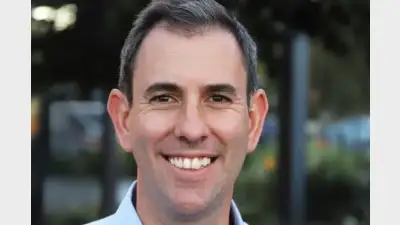Superannuation funds make group insurance a priority



Competition has been intense for group insurance mandates over the past few years but, as Damon Taylor reports, the underlying challenge remains profitably delivering what has been promised.
With the superannuation industry’s sights already set on what will be an eventful 2011, it seems likely that trustees’ attention will be largely on legislative change.
Yet despite the distraction, the necessity of providing fund members with a competitive superannuation service remains the same — and for the general manager of MLC group and direct insurance, Andrew Howard, that means insurance will continue to be a trustee priority.
“The raft of legislative changes and being ready for them ahead of time as well as when they come into play is very much top of mind for anyone involved in the superannuation industry,” he said.
“But having said that, I think there’s enough bandwidth on both sides of the insurance equation to consider insurance for the members, particularly if there’s an issue with the existing insurance offer for the super fund.
“They won’t just pass that by because the competitive cycle amongst funds is so strong,” Howard added.
“Each fund needs to keep up with other funds in their segment and so they ignore the importance of maintaining a quality insurance offer at their own peril.”
Howard said that from an insurer’s perspective, the other factor to take into account was that there was still plenty of scope for current insurance offerings to be upgraded.
“Insurance teams are able to provide their expertise and augment their existing superannuation fund’s offers with respect to insurance upgrades,” he said.
“And I think that’s going to be the differentiator between insurers in this period, the extent to which you have a stable, knowledgeable and good quality team who can add value to the offers of the superannuation fund.
“We’ve worked really hard in the MLC Group Insurance team to build a team with lots of experience and also with a great relationship focus and we think that will help a lot, particularly as funds have distractions with respect to legislation.”
Paul Trigg, OnePath Australia manager for group and life risk, also admitted that trustees would have their plates full when it came to implementing the recommendations coming out of 2010’s Super System Review. He pointed out that some of the same recommendations related directly to insurance.
“There’s no doubt that trustees will have a lot to do but at the same time, their duties continue,” he said.
“Yes, they’ll have a lot more administration and changes to make which of course takes valuable time, but some of the recommendations made also relate to insurance.
“Insurers such as OnePath will be working with out trustees, rolling out packages to actually help them with implementation but to a large extent it’s business as usual,” Trigg continued.
“A lot of the funds that we deal with now, given their sheer size, have specific teams who work solely on insurance.
“So we’ll be focusing on ensuring that we’re working with them to develop the insurance strategy that they’re now required to develop.”
Industry consolidation
Yet while supporting their client funds and trustees through any and all legislative change is top of mind for insurers, recent months have shown that there are other things to be aware of.
A number of fund mergers have shown that super industry consolidation is a definite possibility and according to Trigg, insurers will be watching future developments carefully.
“It certainly looks as though MySuper will accelerate the merging of smaller funds with larger funds,” he said.
“And the Government is clearly stating that you need to have some sort of scale to operate and compete in the new environment.
“I think in terms of any industry that consolidates, there’ll be less business out there and there’s certainly more insurers out there in the group insurance market right now,” continued Trigg.
“We’ve had a lot of insurers enter the market very aggressively over the past five years and that’s certainly intensified competition.
“But I would also point out that a play to enter the market and build market share is not necessarily the right way to go.”
Trigg said that reality of the group insurance business was that insurers had to be priced sustainably.
“You’re potentially at risk for 45 to 50 years for some people where you’ve got a long-term income protection benefit,” he said. “So you’ve got to charge a premium commensurate with that risk.
“That’s something we’ve certainly tried to do is have sustainable pricing,” Trigg continued. “We’ve seen a lot of price competition of late in the tenders and it seems the larger the tender, the higher the price competition — so it’s something we’re acutely aware of.”
Taking an alternate perspective, Howard said that MySuper and SuperStream and the incumbent legislative reform was as much an opportunity as it was a stumbling block.
“What you would say about MySuper is that it is defining a very simple, basic insurance offer that will be applicable to all members,” he said.
“But in many cases, funds — and corporates for that matter — will be looking to differentiate their insurance above and beyond the simple offer that may be in a MySuper environment.
“So I think that one of the things that we’ll be turning our minds to is how can we make attractive insurance benefit designs and attractive insurance processes for members to get their appropriate level of cover,” Howard continued.
“And we have to do that knowing that many Australians don’t have the appropriate level of cover and that those that do have it probably have special needs around particular lines of cover — specifically income protection.
“It’s like anything. There’s a potential impact here but there’s also an opportunity.”
And in an industry set to undergo such significant change, it seems seizing such opportunities will be vital. Group insurance is, after all, a market with a large number of players that is itself growing increasingly competitive.
Group insurance
So is consolidation on the cards in the group insurance space as well?
For Tower head of group life Andrew Boldeman, it is a definite possibility.
“Overall, we’re seeing that as funds themselves consolidate, there’s fewer mandates and those mandates are bigger,” he said.
“With the larger mandates, there’s more risk coming across to insurers and the margins are still thin compared to other lines of business — but service expectations are increasing quite sharply.
“So to my mind that all adds up to an industry that’s going to need some degree of specialisation and more specialisation than perhaps was there five years ago,” Boldeman continued.
“We believe that the group insurance market will certainly change in the super funds space and consolidation towards a few specialised players is certainly a possibility.”
According to Howard, there is no getting around the fact that the Australian market is exceptionally well served from a group insurance perspective.
“There’s around about a dozen group insurers out there and that’s a lot,” he said.
“I think, as you’ll see with AMP and AXA coming together, there will be other potential consolidations in the market but in terms of characterising competition, one of the interesting things in the last 12 to 18 months is that there has been this concept around the market of the power of incumbency.
“It’s certainly true but it relies on a really good relationship, and where relationships are disrupted or the experience or quality of the team serving a group insurance client changes, there have been notable examples of clients moving. I think that will continue to occur over the next 12 to 18 months if there are disruptions in relationships,” Howard continued.
“As relationships change, funds will turn their minds to what kind of long-term relationship they want to have and it becomes very important that the people and the experience and the organisation serving them all pay claims and look for ways to pay claims.
“Those things become important and if they’re not there, there’s always the chance that funds will change their mind and go knocking on other doors before their time is necessarily due.”
Focusing on service
Naturally, the emphasis Howard places on the relationship between an insurer and its client fund will not come as a surprise to insurance industry executives.
Where price per unit of cover was once trustees’ first and last thought when it came to insurance, service is now even more vital and, for Boldeman, something insurers must excel at.
“There’s two aspects of service: service to fund members; and service to the super fund itself, in terms of supporting them in delivering their own objectives,” he said.
“So when it comes to actually dealing with funds, it’s really around whether the insurer is on board, is there an alignment of interest, do they feel that the insurer is supporting the objectives of the fund, are they moving quickly enough, are they coming back with solutions to objectives and problems that the funds themselves have — they’re all key drivers of service.
“That’s one aspect of service but the second aspect is related to service to the end members of funds,” Boldeman continued.
“And there are a number of metrics that funds have there in terms of the interaction that insurers would have through the claims and underwriting process.
“The claims one is probably the most important: are the decisions appropriate, are insurers reaching those decisions quickly enough, is communication with members as good as it could be, how prompt is that communication, how clearly do members who are seeking to claim understand what they need to do? It’s all vital.”
Continuing Boldeman’s line of thinking, Howard said that the manner in which an insurer handled claims was paramount when it came to measuring service.
“Insurance is effectively a contract that says that in the event of death or disablement, the insurer will pay a benefit,” he said.
“And where a client is having trouble either through length of time or through dispute on a regular basis (and it doesn’t have to be that many times because it’s such an emotional issue), where they have problems around that then service is considered or perceived to be poorer.
“So the emphasis has to be on being a good claims payer and a good claims manager, and that’s certainly our focus when it comes to service.”
Howard point to flexibility as being another key aspect of service in insurance provision.
“So what I mean by that is the extent to which you’re willing to have a conversation with members of a superannuation fund or the management of a superannuation fund over the grey areas when it comes to claims or when it comes to granting cover,” he said.
“And that ability to be flexible and see the bigger picture around the probabilities of selection or administrative issue are what can differentiate an insurer’s service.
“If you ask clients who are happy what’s been important to them, they’ve long forgotten the price that they’ve paid per unit per member,” continued Howard.
“Obviously we have to be clear that price is still an important consideration and the ticket to the game, but when all is said and done, that isn’t what they remember.
“They remember the claims paying, they remember the flexibility and they remember the relationship.”
Also reiterating the importance of the relationship, Trigg said that at the end of the day, service was about peace of mind for the fund trustee and fund executive.
“One of the CEOs from one of our client funds recently said to me that insurance was something that was never on his radar because we do such a good job,” he said.
“He said that that was the way he wanted to keep it and that if he was seeing it, then it was only at that point that it became an issue.
“And obviously that’s the way we want to keep it as well, so that on the odd occasion that there’s a disputed claim he knows that he can ring myself, the claims manager, our relationships manager — whoever — and the issue will be resolved at a senior level and in an expedient way.”
Yet if service is a challenge that insurers are now taking in their stride, insurance provision to the superannuation is still fraught with its fair share of dilemmas. One such issue is balancing insurance benefits tailored to a fund’s different demographics against the necessity of obtaining the best possible rate and, according to Trigg, finding the right solution is always tricky.
“It is something that’s quite difficult and it tends to be a historical issue, particularly in industry funds where they’ve had $1 per week as the basis of premium,” he said.
“It might actually be $3 per week or $9 per week, but in the end you’ve got a table which has a unit of $1 buying a reducing amount of cover.
“It might start at $100,000 when you’re 25 and then drop down to $89,000 when you’re 35 but I think most funds are starting to see that not only does that rating structure include an inherent amount of cross-subsidies where the younger members are cross-subsidising the older members but it’s also probably not the right amount of insurance cover based on peoples’ ages,” continued Trigg.
“So if you’ve got a person who’s 20, do they really need three units of $100,000 when they have no financial dependents and no debts?”
Answering his own question, Trigg said that the answer was probably ‘no’, but that when looking at a unit-rated/sum-insured table, funds used to say: ‘Well, how long can we keep a higher sum insured, how long can I keep the $100,000 cover for?’
“So if you extend it out to age 35, that’s one premium — but if you extend it out to age 40 that’s a huge impost of premiums to extend that line out,” he added.
“And what we’ve been trying to show our trustees is changing the traditional way that we look at those sum-insured scales and providing a smaller amount of cover with less age cross-subsidies in the younger ages and more in the centre.
“It’s almost like a bell curve; a model where you provide a small amount of cover but you have automatic increases, since traditionally peoples’ debts and financial dependents increase and then, as they get more money in their superannuation account, the level of cover drops off at the later ages,” continued Trigg.
“But it is difficult because if you’re moving from one to the other, there will always be some members who are disadvantaged and that’s where we’ve been trying to assist funds where we can in having a user pays system so that the appropriate age and classification of member pays based on their respective risk.
“That’s the move that we’ve been seeing and it’s going to be a slow process, it may take a few review periods to move from the traditional scale to what I see as being the scale that’s more appropriate.”
Alternatively, Howard said that it was a decision based largely on the fund’s overall long-term strategy.
“It does vary from trustee to trustee and it comes down the fairness test member per member,” he said.
“Some see the bigger picture and say it’s of greatest benefit to most of the members where others look to ensure that it’s price appropriate for the type of member, but the position on that varies from trustee to trustee and it also relates to their strategic considerations as to where they want to grow the fund.
“We’ve also seen from time to time trustees taking a view that it’s important to offer a price competitive rate in a certain occupation class rather than to provide a homogenous rate across the board,” added Howard.
“And again, it’s a fund-by-fund situation. The longer term considerations of the fund are always going to be growth, the number of members it has and the scale that it can generate — they’re what will help dictate what their decision on that will be.
“That said, I would always come back to the fact that it’s important to strike a good and fair rate for all the members and also to partner with an insurer who focuses on service and extends that service well beyond price.”
Facing the challenge
So despite the legislative and market uncertainty that persists within Australia’s superannuation industry, it seems group insurers are clear on the challenges set before them and, more importantly, how to go about tackling them.
All insurers will have a 2011 checklist and for Trigg it starts with retention.
“Retention is probably my number one priority because it is such a competitive market and because insurers, certainly over the last few years, have offered pricing that is potentially unsustainable,” he said.
“It’s difficult to ensure that your clients actually see that what you’re offering is a total package; you have all of the services, you have the relationships, you have the commerciality in decisions — you have all of these things that extend well beyond price.
“We’ll also be making sure that we’re prepared for any re-tenders or mergers that come up,” Trigg continued.
“So keeping a close eye on who’s merging with who and making sure that we’re ready to put forward a very good offer, particularly if one of those funds is already a OnePath client.”
In a situation where a merger involving a current client was in play, Trigg said that it was absolutely vital that the OnePath offering was competitive and that the fund/insurer relationship was rock solid.
“It really is all about having a good relationship with your client, not just providing them with the service that they want but also being there for them when they need something,” he added.
“I don’t mean meeting service standards 98 per cent of the time, it’s about the one-off situations that occur every week.
“You need to be able to look at those things commercially and assist your client to resolve them quickly, effectively and to the benefit of all parties.”
Recommended for you
Australian super funds have posted early gains in FY26, driven by strong share market performance and resilient long-term returns.
Following the roundtable, the Treasurer said the government plans to review the superannuation performance test, stressing that the review does not signal its abolition.
The Australian Prudential Regulation Authority (APRA) has placed superannuation front and centre in its 2025-26 corporate plan, signalling a period of intensified scrutiny over fund expenditure, governance and member outcomes.
Australian Retirement Trust (ART) has become a substantial shareholder in Tabcorp, taking a stake of just over 5 per cent in the gaming and wagering company.












